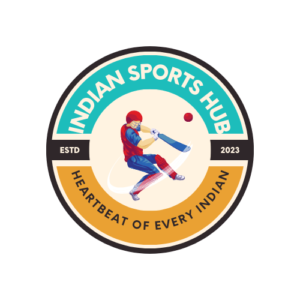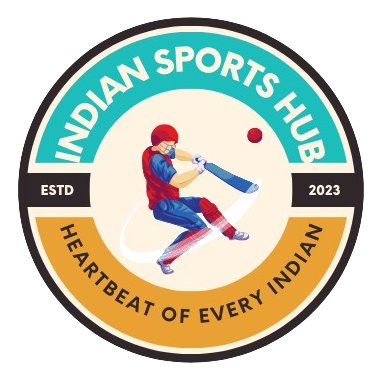Athletes of various skill levels frequently experience sports injuries. From minor sprains to more severe fractures, these injuries can impede performance and, if not managed properly, can have long-term consequences. Understanding how to prevent and effectively recover from sports injuries is crucial for athletes to maintain their physical health and performance levels.
Types of Sports Injuries
Sports injuries vary widely and can affect different parts of the body. They can be broadly categorized into acute injuries, typically resulting from sudden impact or trauma, and overuse injuries, often caused by repetitive motions or overtraining.
Preventive Measures
Preventing sports injuries starts with proper preparation. Warm-up routines, incorporating stretching and dynamic movements, are essential to prepare the body for physical activity. Additionally, using appropriate equipment and maintaining proper technique can significantly reduce the risk of injury. Conditioning and strength training also play pivotal roles in injury prevention.
Recovery Strategies
When injuries occur, immediate care is essential. The R.I.C.E. (Rest, Ice, Compression, Elevation) protocol is commonly recommended for initial treatment. Rehabilitation exercises, tailored to the specific injury and its phase of healing, are crucial for recovery. Adequate rest and a balanced diet facilitate the body’s healing process.
Injury-Specific Prevention and Recovery Techniques
Different injuries require tailored approaches for prevention and recovery. For instance, sprains may require bracing and specific exercises, while fractures may need immobilization and gradual rehabilitation. Understanding the timelines and expectations for each injury aids in effective recovery.
The Psychological Aspect
Athlete’s mental health can be affected by injuries. Overcoming psychological barriers and maintaining a positive mindset are integral parts of the recovery process. Support from peers, coaches, and healthcare professionals plays a vital role in mental recovery.
Returning to Sports Safely
After an injury, returning to sports requires a gradual process. Athletes must follow a structured plan, often in collaboration with coaches and healthcare providers, to ensure a safe return without risking re-injury.
Long-Term Injury Prevention Strategies
Beyond immediate recovery, athletes should focus on preventing future injuries. Incorporating cross-training, diversifying workouts, and listening to the body’s signals are crucial for long-term injury prevention.
The Role of Technology and Innovations
Advancements in technology have revolutionized injury prevention and recovery. Tools for monitoring performance and detecting early signs of injury aid in athlete safety and longevity in sports.
Case Studies and Success Stories
Real-life examples of athletes successfully overcoming injuries through proper prevention and rehabilitation techniques serve as inspiration and guidance for others.
Community Support and Resources
A supportive community and access to professional guidance and resources are vital for athletes navigating the complexities of sports injuries.
Common Myths and Misconceptions
There are several myths surrounding sports injuries that need debunking. Addressing these misconceptions helps athletes make informed decisions about their health.
Conclusion
Sports injuries are inevitable in athletic pursuits, but their impact can be mitigated through effective prevention and comprehensive recovery strategies. By understanding the types of injuries, adopting preventive measures, and focusing on proper recovery, athletes can sustain their performance and long-term physical well-being.
FAQs
1. What are common sports injuries?
Common sports injuries include strains, sprains, fractures, dislocations, and tendon injuries. These often affect areas like knees, ankles, shoulders, and elbows due to repetitive movements, sudden impacts, or overuse.
2. How can I prevent sports injuries?
- Warm-Up and Cool Down: Prioritize stretching and warming up before exercising. Cooling down after activity helps muscles recover.
- Proper Equipment: Wear appropriate gear, such as helmets, pads, or supportive footwear.
- Technique and Form: Learn and practice proper techniques to reduce the risk of injury during sports activities.
- Rest and Recovery: Allow adequate time for rest between workouts or games to prevent overuse injuries.
- Strength and Conditioning: Build strength and flexibility in muscles through targeted exercises.
3. What should I do immediately after a sports injury?
- R.I.C.E Method: Rest, Ice, Compression, and Elevation. Rest the injured area, apply ice to reduce swelling, use compression bandages, and elevate the injured limb to minimize swelling.
- Seek Medical Attention: For severe pain, immobility, or visible deformity, seek immediate medical help.
4. How long does recovery from a sports injury take?
Recovery time varies depending on the type and severity of the injury. Minor injuries might heal in a few days or weeks with proper care, while more severe injuries might require months of rehabilitation.
5. What is the role of rehabilitation in sports injury recovery?
Rehabilitation focuses on restoring strength, flexibility, and function to the injured area. It often involves physical therapy exercises, stretching, and gradual reintroduction to activities to regain full function.
6. When can I return to sports after an injury?
Returning to sports should be gradual and guided by medical advice. Returning too quickly can result in getting injured again. It’s important to ensure the injured area has fully healed, and strength and flexibility are restored before resuming full activity.
7. Are there specific exercises or routines to prevent sports injuries?
Yes, certain exercises can help prevent sports injuries by strengthening muscles and improving flexibility. These can include core strength exercises, balance and stability exercises, and sport-specific training to improve technique.
8. How important is nutrition in sports injury prevention and recovery?
Proper nutrition is crucial for preventing injuries and aiding in recovery. A balanced diet with adequate protein, vitamins, and minerals supports muscle repair and overall health, aiding in recovery and injury prevention.
9. Can I prevent overuse injuries in sports?
Yes, overuse injuries can often be prevented by incorporating rest days into training schedules, gradually increasing intensity, varying workout routines, and paying attention to early signs of fatigue or pain.
10. When should I consult a healthcare professional for a sports injury?
Consult a healthcare professional if the pain is severe, persists despite rest, or if there’s visible swelling, deformity, or loss of function. Seeking medical advice ensures proper diagnosis and treatment for timely recovery.



